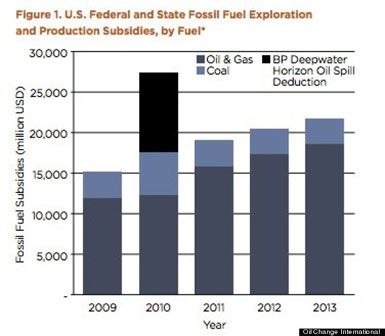The fact that China’s emissions are expected to peak around 2029 is very scary because we don’t have that long to wait.
But the International Energy Agency (IEA) has better news: worldwide, energy-related emissions could peak in 2020 – and at zero net economic cost.
This is probably the most important reason the US and EU need to lead. Not only are we responsible for historical emissions, but we have the ability to quickly lower them. We don’t have time to wait for China and India, we must act now to cut global emissions, and let them follow.
Emissions from energy are double all other sources combined, says IEA.
"As IEA analysis has repeatedly shown, the cost and difficulty of mitigating greenhouse gas emissions increases every year, and time is of the essence," says Maria van der Hoeven, Executive Director of IEA. "While we see growing consensus among countries that it is time to act, we must ensure that the steps taken are adequate and that the commitments made are kept."
The steps IEA recommends are:
1. Peak in emissions: set the conditions to achieve an early peak in global energy-related emissions.
2. Five-year revision: review national climate targets regularly, to raise ambitions.
3. Lock in the vision: translate the world’s climate goal into a collective long-term emissions goal.
4. Track the transition: establish a process for tracking achievements in the energy sector.
How to Get to Peak Emissions By 2020
This milestone can be met using only proven technologies and policies, and without affecting economic prospects of any region.
Here’s what IEA recommends:
- Increase energy efficiency in industry, buildings and transport sectors
- Reduce the use of the least-efficient coal-fired power plants and ban all new construction
- Increase investments in renewable energy for electricity from $270 billion in 2014 to $400 billion in 2030
- Phase out fossil-fuel subsidies by 2030
- Reduce methane emissions in oil and gas production
We certainly have the ability to implement this list and are on the path for energy efficiency and coal plants. Rather than cutting investments in renewable energy, while continuing fossil subsidies, like the GOP would have us do, we need to do the opposite. The EPA is about to issue rules for controlling methane emissions, and industry needs to get on with that asap.
"If the world wants to avoid a temperature increase of 5 or 6 degrees Celsius by the end of the century, then ambitious programmes of energy efficiency have to be launched in all sectors and in all countries," says van der Hoeven.

Lock In the Vision
The goal of keeping long-term average global temperatures below 2 °C should be expressed as a long-term greenhouse-gas emissions target, which can be more easily measured. This would guide investment decisions, spur innovative technologies, drive needed market reforms and strong domestic policies, such as carbon pricing – all of which are necessary to meet the 2 °C goal, says IEA.
So far, countries’ climate targets are inadequate because, taken collectively, emissions will slow, but keep rising until 2030. Last year, for the first time, emissions stayed flat even with economic growth of 3%. This shows we are on the right track, but we need to double the pace, says IEA.
The typically conservative IEA has urged governments to stop subsidizing fossil fuels and to instead subsidize renewable energy to stabilize the earth’s climate. With a price on carbon, solar can provide a third of the world’s energy by 2060.
Read IEA’s World Energy Outlook: Special Report on Energy and Climate Change:
